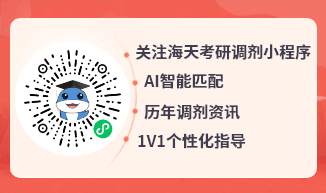考研英语阅读经典试题及答案22
暑假已经结束,考研的复习还未结束。同学们在新学期更要努力备考,掌握知识点和技巧。海天考研小编为同学们整理了考研英语经典的阅读练习题,希望对同学们的复习有帮助。
Between the eighth and eleventh centuries A. D., the Byzantine Empire staged an almost unparalleled economic and cultural revival, a recovery that is all the more striking because it followed a long period of severe internal decline. By the early eighth century, the empire had lost roughly two-thirds of the territory it had possessed in the year 600, and its remaining area was being raided by Arabs and Bulgarians, who at times threatened to take Constantinople and extinguished the empire altogether. The wealth of the state and its subjects was greatly diminished, and artistic and literary production had virtually ceased. By the early eleventh century, however, the empire had regained almost half of its lost possessions, its new frontiers were secure, and its influence extended far beyond its borders. The economy had recovered, the treasury was full, and art and scholarship had advanced.
To consider the Byzantine military, cultural, and economic advances as differentiated aspects of a single phenomenon is reasonable. After all, these three forms of progress have gone together in a number of states and civilizations. Rome under Augustus and fifth-century Athens provide the most obvious examples in antiquity. Moreover, an examination of the apparent sequential connections among military, economic, and cultural forms of progress might help explain the dynamics of historical change.
The common explanation of these apparent connections in the case of Byzantium would run like this: when the empire had turned back enemy raids on its own territory and had begun to raid and conquer enemy territory, Byzantine resources naturally expanded and more money became available to patronize art and literature. Therefore, Byzantine military achievements led to economic advances, which in turn led to cultural revival.
No doubt this hypothetical pattern did apply at times during the course of the recovery. Yet it is not clear that military advances invariably came first. Economic advances second, and intellectual advances third. In the 860’s the Byzantine Empire began to recover from Arab incursions so that by 872 the military balance with the Abbasid Caliphate had been permanently altered in the empire’s favor. The beginning of the empire’s economic revival, however, can be placed between 810 and 830. Finally, the Byzantine revival of learning appears to have begun even earlier. A number of notable scholars and writers appeared by 788 and, by the last decade of the eighth century, a cultural revival was in full bloom, a revival that lasted until the fall of Constantinople in 1453. Thus the commonly expected order of military revival followed by economic and then by cultural recovery was reversed in Byzantium. In fact, the revival of Byzantine learning may itself have influenced the subsequent economic and military expansion.
1. Which of the following best states the central idea of the text?
[A] The Byzantine Empire was a unique case in which the usual order of military and economic revival preceding cultural revival was reversed.
[B] The economic, cultural, and military revival in the Byzantine Empire between the eighth and eleventh centuries was similar in its order to the sequence of revival in Augustan Rome and fifth-century Athens.
[C] After 810 Byzantine economic recovery spurred a military and, later, cultural expansion that lasted until 1453.
[D] The revival of the Byzantine Empire between the eighth and eleventh centuries shows cultural rebirth preceding economic and military revival, the reverse of the generally accepted sequence of progress.
2. It can be inferred from the text that the Byzantine Empire sustained significant territorial losses
[A] in 600.
[B] during the seventh century.
[C] a century after the cultural achievements of the Byzantine Empire had been lost.
[D] soon after the revival of Byzantine learning.
3. In the third paragraph, the author most probably provides an explanation of the apparent connections among economic, military, and cultural development in order to
[A] suggest that the process of revival in Byzantium accords with this model.
[B] set up an order of events that is then shown to be not generally applicable to the case of Byzantium.
[C] cast aspersions on traditional historical scholarship about Byzantium.
[D] suggest that Byzantium represents a case for which no historical precedent exists.
4. Which of the following does the author mention as crucial evidence concerning the manner in which the Byzantine revival began?
[A] The Byzantine military revival of the 860’s led to economic and cultural advances.
[B] The Byzantine cultural revival lasted until 1453.
[C] The Byzantine economic recovery began in the 900’s.
[D] The revival of Byzantine learning began toward the end of the eighth century.
5. According to the author, “The common explanation” (line 1, paragraph 3) of connections between economic, military, and cultural development is
[A] revolutionary and too new to have been applied to the history of the Byzantine Empire.
[B] reasonable, but an antiquated theory of the nature of progress.
[C] not applicable to the Byzantine revival as a whole, but does perhaps accurately describe limited periods during the revival.
[D] equally applicable to the Byzantine case as a whole and to the history of military, economic, and cultural advances in ancient Greece and Rome.
[答案与考点解析]
1. 【答案】D
【考点解析】这是一道中心主旨题。本文的中心主旨句在尾段的倒数第二句。如果考生能够识别出本文的中心主旨句,就会迅速地推导出本题的正确答案D。考生在解题时应首先寻找出全文的中心主旨句。
2. 【答案】B
【考点解析】这是一道细节推导题。从题干中的“territorial losses”可迅速确定本题答案信息的来源在第一段的第二句。通过仔细阅读本句的内容并且进行深入的推导就可得出本题的正确选项B。考生在解题时应该善于依据原文的内容进行深入地推导。
3. 【答案】B
【考点解析】本题是一道段落之间的关系题型。旨在考察学生的语言基本功,尤其是考察学生对段落之间相互关系理解和掌握的能力,这是一道比较难的题。本文第三段主要向我们介绍一种“common explanation”(通常的解释)。根据一般的行文规律,介绍“common”(通常的)是为了文章接下来阐述“不通常的”内容做一个铺垫,也是为了进行鲜明的对照和对比。这是考生在解答阅读题时需要掌握的一个规律。如果考生懂得这个规律并且把第三段和第四联系起来加以阅读和理解就不难得出本文的正确选项B。考生在解题时一定要牢记平时所积累的解题技巧和方法,尤其是要注意一些规律性的解题技巧和方法。
4. 【答案】D
【考点解析】这是一道审题定位题。根据题干中的“concerning the manner in which the Byzantine revival began”可将本题的答案信息迅速确定在本文的尾段。本题具体的答案信息在尾段的倒数第三句。因为尾段的倒数第二句是全文的中心主旨句,所以支持全文中心主旨句的最主要证据本应在该句之前。由于本题的题干涉及“Byzantine revival began”,故本题的答案应该是强调“拜占庭帝国文化复兴开始时间”的选项D。考生在解题时一定要对段落的行文发展和结构有所把握,这样才能迅速地审题定位。
5. 【答案】C
【考点解析】这是一道段落间关系与指代词题型。题干中的“common explanation”将我们带到了本文的第三段。但是本文提到“common explanation”的目的是要讲这种“common explanation”不能完全应用到拜占庭帝国的复兴。第四段的前三句是作者对这种“common explanation”的具体态度和观点。尾段首句中的指代词“this”和“at times”对我们推导本题的正确选项C起了重要的作用。考生在解题时一定要牢记原文作者的写作意图,要十分重视段落之间的相互关系。
2025考研人数达388w,考研热度依旧火热!如何备战2026考研?哪个考研专业适合自己?在职考生如何备考?考研知识点繁多,择校困难大,和海天考研咨询老师聊一聊。网课面授多项选,专业辅导1对1,全年集训随时学!

下一篇:考研英语阅读经典试题及答案23






